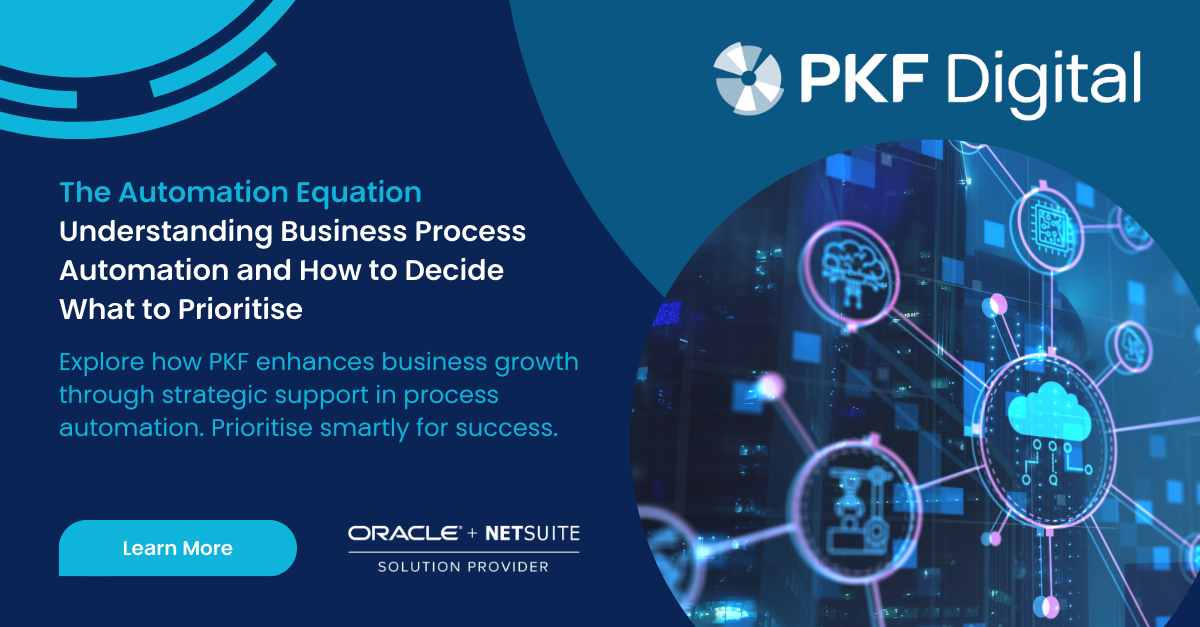To automate, or not to automate. This is a question that most businesses will be facing in 2024 due to the almost unmanageable rate at which technology has evolved. From smart home technology to business process automation, modern technology is making automation infinitely more achievable at a much lower cost than in previous years. While the concepts are not new, the simplicity of the technology that is now available makes automation a very real possibility in every industry.
The Essence of Business Process Automation (BPA)
BPA is the technology-enabled automation of complex business processes. It is not just about automating manual tasks but about streamlining and optimising operational workflows to achieve more strategic goals. BPA can involve integrating applications, restructuring labour resources, and using software applications and hardware throughout the organisation to systematically complete a range of tasks that traditionally have been managed by people.
The migration to thinking of automation as an imperative, rather than a luxury is likely to continue to gain momentum, as businesses that choose to stay with traditional, manual methods of completing tasks will find themselves competing with businesses that have fully embraced this opportunity to do more with less.
Key Benefits of BPA
Efficiency
Automation's primary advantage is its ability to expedite task completion while enhancing accuracy. This is achieved by streamlining processes that traditionally require multiple steps and human intervention. Automated systems can work around the clock without the need for breaks or downtime, significantly speeding up the workflow. Additionally, the precision of automated systems in executing tasks reduces the likelihood of errors that can arise from manual handling, leading to more efficient operations overall.
Cost Reduction
One of the most tangible benefits of BPA is the reduction in labour costs. Automation minimises the necessity for labour-intensive tasks, which can be a significant financial burden on businesses, especially those that involve repetitive or menial tasks. By automating these processes, companies can allocate their financial resources more effectively, investing in other areas that can drive growth and innovation. Furthermore, reducing dependency on manual labour can also decrease the costs associated with training and employee turnover.
Accuracy
The reliability of machines in performing tasks consistently and accurately is a substantial advantage over manual processes, which are prone to human error. Automated processes follow a predefined set of rules and parameters, ensuring that each task is executed with a high degree of precision. This consistency is particularly beneficial in tasks that require a high level of detail and accuracy, such as data entry and analysis, where even minor errors can have significant repercussions.
Compliance and Auditability
Automated processes provide a consistent and transparent approach to carrying out tasks, which is crucial for compliance and auditability. In industries where regulatory compliance is critical, automation ensures that processes adhere to the required standards and guidelines. Automated systems can also maintain detailed logs of all activities, providing an audit trail that can be invaluable for compliance reporting and audits. This level of consistency and traceability is challenging to achieve with manual processes.
Employee Satisfaction
Automating mundane and repetitive tasks allows employees to focus on more strategic and engaging work. This shift not only increases job satisfaction but can also lead to higher levels of creativity and innovation within the team. Employees are more likely to feel valued and motivated when their skills and talents are utilised for challenging tasks rather than menial work. This not only enhances productivity but can also improve employee retention, as team members feel more engaged and connected to their work and the overall goals of the organisation.
Identifying the Right Processes to Automate
The journey towards automation requires a strategic approach, beginning with the identification of the most suitable processes for automation. It's important to recognise that not every process within a business is an ideal candidate for automation. The selection should be based on a set of specific criteria to ensure that the automation brings about the most benefit and efficiency to the organisation. Here are some key factors to consider:
Repetitiveness
Tasks that are performed regularly and follow a consistent pattern are excellent candidates for automation. Repetitive tasks often involve routine processes that do not require complex decision-making. Automating these tasks can free up valuable time for employees to focus on more strategic and creative activities.
Time-Consumption
Processes that consume a substantial amount of time, particularly those that are labour-intensive, are prime targets for automation. By automating these processes, companies can significantly reduce the time spent on such tasks, thereby speeding up the overall workflow and increasing productivity.
Prone to Error
Tasks that require a high level of accuracy and are susceptible to human error are ideal for automation. Automated systems are not only faster but also more consistent in their output, reducing the likelihood of errors. This is particularly beneficial in areas like data entry, accounting, or any process where precision is critical.
Scalability
Processes that need to adapt and scale with the business's growth are good candidates for automation. As a business expands, its processes need to handle increased volumes or complexities. Automated systems can be designed to scale accordingly, ensuring that the growth of the business is not hindered by its operational capabilities.
Integration Capability
The ability of a process to be integrated seamlessly with existing systems is a crucial factor. Tasks that can easily fit into the existing technological infrastructure and work in harmony with other automated processes will provide more efficient and effective results. This integration capability ensures that the automation of one process does not disrupt or negatively impact other operations within the business.

Short on time? Download this article to read later or share with a colleague.
The Automation Equation: Understanding Business Process Automation and How to Decide What to Prioritise.
By evaluating processes against these criteria, businesses can strategically choose which areas to automate, leading to improved efficiency, accuracy, and scalability, while also enhancing overall employee satisfaction and engagement.
Risks vs. Rewards: Navigating the Automation Equation
The journey into automation, while laden with significant benefits, is not without its challenges. Understanding and balancing the risks associated with automation is as crucial as harnessing its rewards. Let's delve deeper into the key risks that come with the territory of automation.
Depersonalisation Risks and the Impact on Customer Experience
Excessive Automation in Customer Interactions
Overuse of automation in customer-facing processes can lead to a lack of personal touch in customer service. This depersonalisation risk is a critical factor, as customers often value and seek personalised interactions. Automation that replaces human elements in areas where customers expect personal engagement can lead to dissatisfaction.
Reduced Customer Rapport and Loyalty
Depersonalisation can erode the rapport that businesses build with their customers. Personalised interactions often foster loyalty and long-term relationships. By removing the human element, there's a risk of customers feeling less connected to the brand, which can impact customer retention and business growth.
Complexity and Integration Challenges
Challenges with Complex Automation Solutions
Automation solutions that are intricate in nature can pose significant integration challenges. These complexities arise particularly when these systems need to integrate with existing, perhaps less sophisticated, systems and workflows within the organisation.
Seamless Integration with Existing Systems
The challenge is to ensure that new automation solutions work harmoniously with existing infrastructure. Incompatibility or integration issues can lead to disruptions in workflow, and reduced efficiency, and may require additional time and resources to resolve.
Data Accuracy Issues
Heavy Dependence on Data Quality
Automation systems rely significantly on data to make decisions and execute processes. The accuracy of this data is paramount. Inaccurate or poor-quality data can lead to erroneous outcomes from automated systems, potentially causing significant issues in decision-making and process execution.
Risks of Incorrect Decisions and Actions
The repercussions of decisions made based on inaccurate data can be far-reaching, affecting various aspects of business operations. It's essential to ensure data integrity to avoid these pitfalls.
Employee Resistance Factors
Perception of Automation as a Job Threat
One of the most significant challenges in implementing automation is the perception among employees that it might threaten their job security. This fear can lead to resistance, hindering the successful adoption of automation technologies.
Need for Adequate Training
Resistance also stems from a lack of familiarity or understanding of new systems. Ensuring that employees are adequately trained and comfortable with automated systems is crucial for smooth integration and acceptance.
Embrace the future with PKF Digital: your partner in successful Business Process Automation.
Implementing BPA effectively can lead to remarkable improvements in operational efficiency, cost reduction, and overall agility. Successful Business Process Automation hinges on thoughtful process selection, prioritisation aligned with your business goals and meticulous execution. By adopting BPA, companies can ensure smoother operations and maintain a competitive stance in their industry.
Take Action with PKF Digital
As you consider the steps towards integrating BPA into your business, PKF Digital offers the expertise and support needed for a seamless transition. We're here to help you navigate through the process of automating your business operations.
Benefits of Partnering with PKF Digital
- Tailored Approach: We understand each business is unique. Our team at PKF Digital provides solutions that are customised to your specific needs.
- Strategic Focus: We align automation with your business strategy, ensuring that every step taken enhances your long-term goals.
- Efficient Implementation: Our expertise ensures a smooth implementation of BPA, minimising disruptions to your current operations.
- Ongoing Support: Post-implementation, we continue to offer support, ensuring your business stays on track with its automation objectives.
Next Steps
Considering BPA for your business? Explore how PKF Digital can assist in transforming your processes for greater efficiency and competitiveness. Visit pkfdigital.com.au to learn more about our services and how we can help you make the most of business process automation.
With PKF Digital, simplifying and innovating your business processes becomes a reality.


